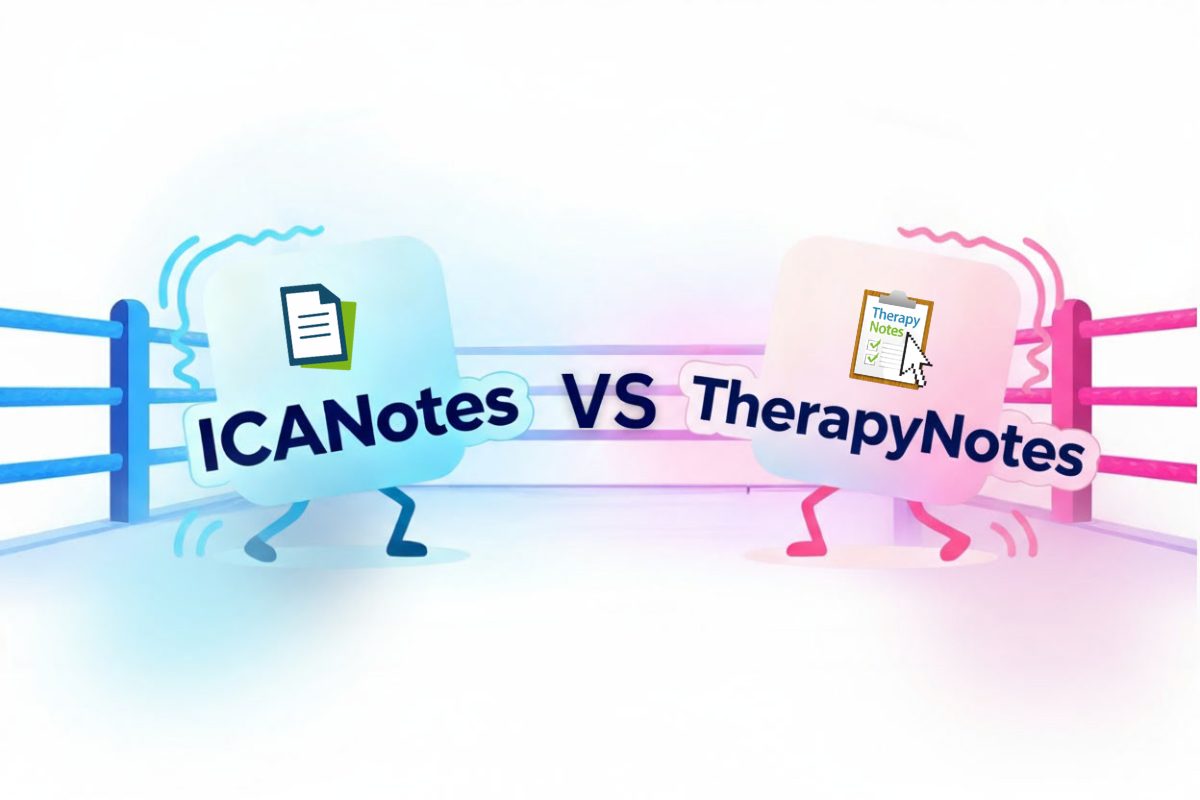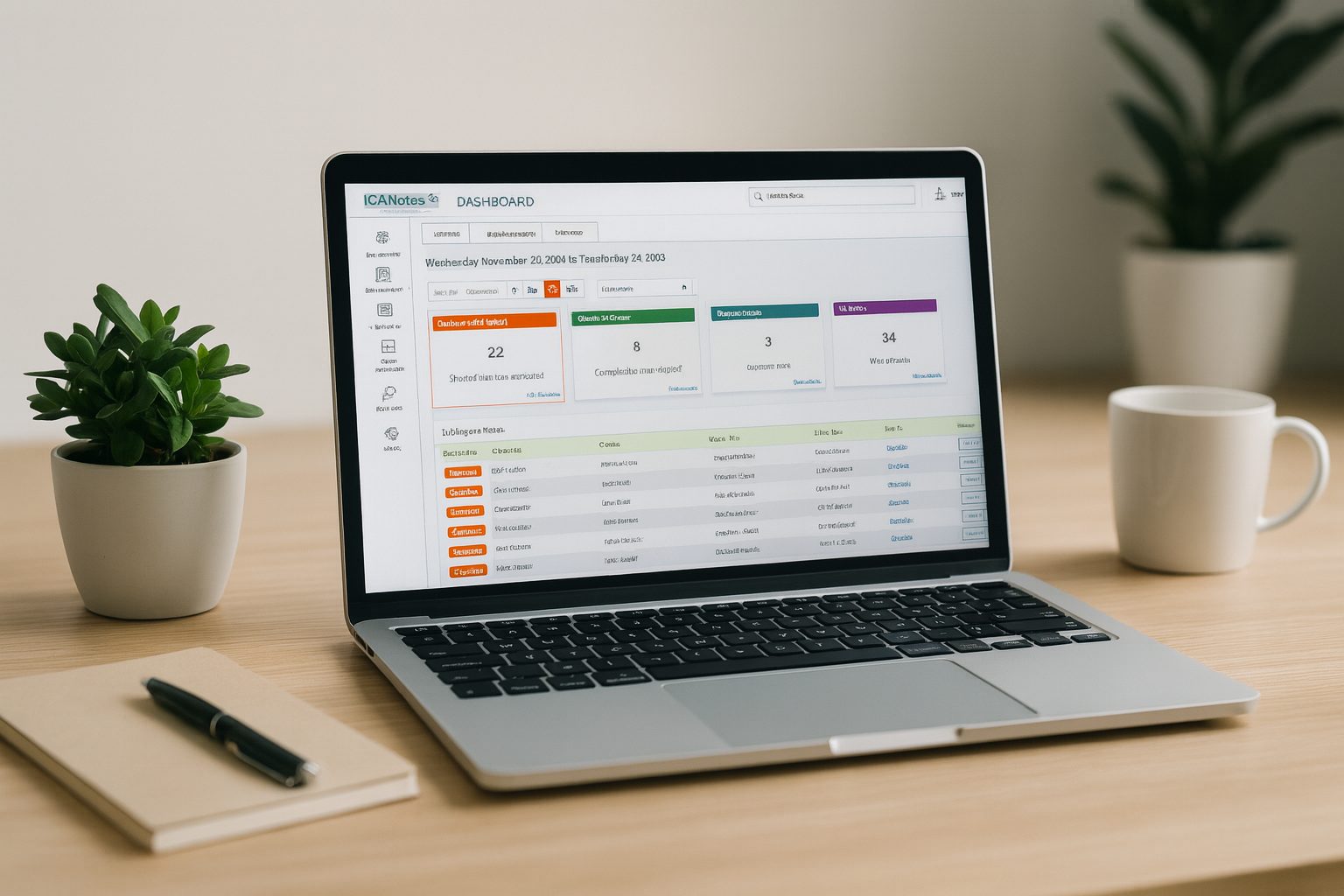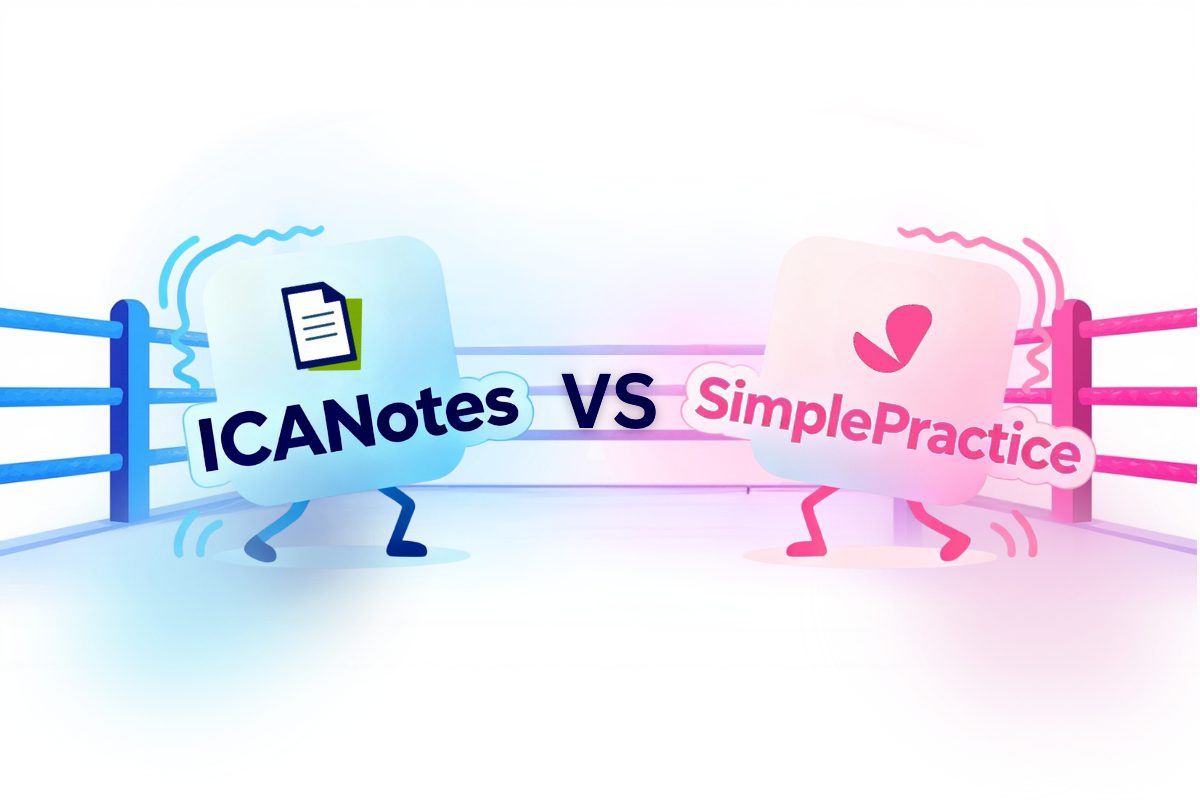Behavioral Health Billing Metrics and KPIs Every Practice Should Track in 2025
Tracking the right behavioral health billing metrics is essential for protecting revenue and strengthening financial performance. In today’s increasingly complex healthcare environment, organizations that fail to monitor key indicators risk higher denial rates, slower collections, and missed opportunities for growth. By focusing on behavioral health billing KPIs — such as days in accounts receivable, net collection rate, and clean claim rate — practice leaders can uncover hidden inefficiencies, benchmark performance against industry standards, and make data-driven decisions that improve both profitability and patient care. This guide explores the most important billing metrics and KPIs every behavioral health practice should track in 2025 to stay competitive and financially sustainable.

Last Updated: September 23, 2025


What You'll Learn
-
Why behavioral health billing metrics and behavioral health billing KPIs are essential for financial stability in 2025.
-
The 8 most important KPIs every behavioral health practice should track, with industry benchmarks for success.
-
Common billing challenges unique to behavioral health — like authorizations, coding complexity, and payer denials — and how metrics can help overcome them.
-
How to use KPIs for benchmarking, root cause analysis, and real-time dashboard tracking.
-
Ways to tailor financial metrics to behavioral health specialties, from session-based billing to documentation compliance.
-
How KPI insights can support payer negotiations, staff training, and long-term strategic growth.
Contents
- Why Revenue Cycle KPIs Matter in Behavioral Health
- Common Challenges in Behavioral Health Billing
- 8 Essential KPIs to Track in 2025: The Best KPIs for Behavioral Health Revenue Cycle Success
- How to Analyze and Improve each KPI
- Tailoring KPIs to Behavioral Health Specialties
- Using KPIs to Drive Strategic Growth
- FAQs: Behavioral Health Billing Metrics
- Conclusion
- How ICANotes Helps Practices Optimize Behavioral Health Billing Metrics
Why Revenue Cycle KPIs Matter in Behavioral Health
Did you know that behavioral health providers lose up to 20% of potential revenue due to preventable billing errors and inefficient revenue cycle management?
In today's complex healthcare landscape, mastering behavioral health billing metrics and KPIs isn't just about boosting your bottom line — it's essential for survival. However, many behavioral health organizations struggle to identify which metrics truly matter. In fact, while tracking days in AR behavioral health facilities can spot collection issues, focusing on the wrong behavioral health financial metrics often leads to missed opportunities and cash flow problems.
Furthermore, the unique challenges of behavioral health billing — from authorization requirements to specialized coding — demand a tailored approach to performance measurement. Consequently, understanding and optimizing behavioral health billing KPIs has become a critical skill for practice leaders who want to thrive in 2025 and beyond.
This comprehensive guide will walk you through the essential revenue cycle KPIs specifically relevant to behavioral health practices, how to analyze them effectively, and ultimately, how to transform these insights into strategic advantages for your organization.
Why Behavioral Health Billing Metrics and KPIs Matter
Revenue cycle KPIs are not just metrics; they are behavioral health KPIs that chart the path toward sustainability in a healthcare landscape that grows more intricate by the day. These metrics provide actionable insights into key aspects of financial health, including billing accuracy, claim denial rates, and revenue optimization [1]. Without proper measurement, behavioral health facilities cannot improve their financial performance or identify areas needing attention.
The Role of KPIs in Financial Sustainability
Financial sustainability represents an absolute necessity for behavioral health practices to operate without hindrances [1]. As the healthcare industry shifts from fee-for-service to value-based care models, organizations must fine-tune their workflow, structure, and operations to maintain financial health [1].
Understanding financial KPIs helps behavioral health providers:
- Uncover hidden revenue opportunities while exposing the gaps that quietly erode your collection processes.
- Measure profitability across different service lines
- Allocate staff and resources effectively based on data-driven insights [1]
Additionally, tracking metrics like revenue per patient helps spot opportunities to improve billing processes and overall profitability [2]. Without this visibility, practices essentially operate in the dark regarding their financial performance.
Strong financial health directly influences a practice's ability to serve patients effectively [3]. When revenue cycle processes run smoothly, staff can dedicate more time to patient care rather than administrative troubleshooting [3]. Regular monitoring creates a data-driven culture where decisions are based on concrete metrics rather than assumptions, leading to more efficient operations and better financial outcomes [3].
How KPIs Support Compliance and Care Quality
Beyond financial benefits, tracking the right behavioral financial metrics plays a vital role in maintaining compliance and improving care quality. Accurate and timely documentation — a key component of effective KPI management — supports personalized care, protects organizations during client disputes, and enables seamless care coordination across providers [4].
In behavioral health, documentation tends to be fluid, qualitative, and narrative-based, making it challenging to extract consistent, structured data [4]. Under fee-for-service models, payment hinges on complete, precise documentation that aligns with services delivered. In value-based care, the stakes are even higher — documentation directly impacts reimbursement, care quality, and outcomes [4].
Monitoring metrics like documentation completeness rate and documentation-related complaint rates helps organizations identify areas for improvement [4]. At the same time, tracking patient-centered metrics provides insights into how systemic barriers affect client engagement and treatment adherence [4].
Common Challenges in Behavioral Health Billing
Behavioral health practices face unique billing complexities beyond typical medical specialties [5]. Unlike standard medical services, behavioral health billing involves a wide range of procedure codes and diagnoses, unique insurance policies, and additional privacy rules [5].
Some primary challenges include:
- Complex documentation requirements that go beyond general notes — insurers increasingly expect evidence-based descriptions to prove therapy was medically necessary [5]
- Specialized coding systems requiring expertise in ICD-10, DSM-5 terminology, CPT therapy codes, and HCPCS modifiers [5]
- Restrictive coverage policies remain more limited for mental health services compared to physical health [5]
- Authorization hurdles — most mental health services require prior authorization from insurance companies, often at each treatment stage [5]
These challenges result in high claim denial rates, primarily due to missing or expired authorizations, services exceeding frequency limitations, non-covered diagnoses, and provider credentialing issues [5]. Moreover, the resolution process for behavioral health denials is often prolonged, significantly impacting cash flow and increasing administrative costs [5].
By tracking revenue cycle KPIs, behavioral health organizations gain the foresight to spot vulnerabilities early and act decisively — turning potential financial problems into manageable course corrections before they escalate.
Free 2025 Billing Guide for Mental Health Providers
Clean claims. Correct coding. Fewer denials.
This comprehensive guide breaks down everything you need to bill accurately, reduce denials, and protect your revenue. Download your copy and get the tools you need to streamline billing and boost reimbursement.
8 Essential KPIs to Track in 2025: The Best KPIs for Behavioral Health Revenue Cycle Success
Tracking the right metrics transforms your revenue cycle from a mystery into a manageable process. Based on industry best practices and behavioral health-specific challenges, these eight metrics represent the best KPIs for behavioral health revenue cycle monitoring in 2025.
-
Days in Accounts Receivable (AR)
Days in AR measures how long your practice takes to collect payments after submitting claims. The Medical Group Management Association (MGMA) recommends keeping AR days below 40 [6], with optimal performance between 30-40 days [4]. High AR days strangle cash flow, delay reinvestment, and compromise operational efficiency [6]. Breaking down AR by payer helps identify problem areas — whether it's a specific insurance company or patient payment issues [6]. Notably, accounts aging beyond 90 days represent revenue at significant risk, as the likelihood of collection diminishes substantially over time [7].
-
Net Collection Rate
Net Collection Rate (NCR) measures the percentage of collectible revenue (after contractual adjustments) your practice actually receives [8]. Unlike gross collection rates, NCR provides a more accurate picture of revenue cycle efficiency [8]. Successful behavioral health practices maintain an NCR of at least 95% [8], though many struggle to reach this benchmark. When NCR falls below 90%, urgent examination of your revenue cycle processes becomes necessary [9].

-
Claim Denial Rate
Claim denial rate tracks how often your claims are rejected by payers. According to industry standards, denial rates should remain below 5% [4], with top-performing practices achieving rates below 3%. Higher denial rates signal significant revenue cycle inefficiencies. Particularly in behavioral health, claim denials occur at rates 85% higher than medical claims [10], despite federal parity laws requiring equal coverage. Tracking denial patterns helps identify systemic issues like authorization problems, coding errors, or documentation gaps [3].
-
Cost to Collect
Cost to collect represents your total expenses for collecting payments from both payers and patients [11]. This metric is calculated as a percentage of total collections [11]. The industry standard ranges from 3-4% [12], with lower percentages indicating more efficient processes. Healthcare organizations utilizing automation report an average cost-to-collect of 3.51% versus 3.74% for those without automation [13]. For a health system with $5 billion in revenue, this difference could translate to $11.5 million in savings [13].
-
Clean Claim Rate
Clean claim rate represents the percentage of claims that pass through your billing system without errors or manual intervention [14]. This metric directly impacts how quickly you get paid. Healthcare providers should aim for a clean claims rate of 90% or higher [15]. High clean claim rates indicate effective front-end processes and proper staff training [4]. According to research, the most common reasons for claim rejections include missing information (45%) and eligibility issues (24%) [16].
-
Patient Payment Collection Rate
This metric measures the percentage of patient-responsible payments successfully collected [2]. With high-deductible plans becoming common, patient collections significantly impact your bottom line. A survey by MGMA found that patient balance collection averages only around 57% after services are rendered [17], highlighting the importance of upfront collection strategies.
-
First-Pass Resolution Rate
First-Pass Resolution Rate (FPRR) measures the percentage of claims paid on first submission without requiring resubmission or corrections [18]. The industry benchmark is 90% or higher [19]. High FPRR indicates efficient billing processes, resulting in faster payment cycles and reduced administrative costs. According to Change Healthcare, the average cost to rework a denied claim ranges from $25-$117 [19].
-
Claim Appeal Success Rate
This metric tracks how often your appeals of denied claims succeed. According to the National Association of Insurance Commissioners, mental health claims achieve external review overturn rates of approximately 54% [10], significantly higher than the 38% average for all claim types. Despite high success rates, fewer than 1% of denied claims are appealed [20], representing substantial missed revenue opportunities.
How to Analyze and Improve each KPI
Merely collecting KPI data isn't enough, successful behavioral health organizations must analyze and act on these metrics to drive improvement. Indeed, as one expert noted, "Unless it can be measured, it can't be improved" [5]. The process of turning behavioral health billing metrics into actionable insights involves three critical components: benchmarking, root cause analysis, and real-time tracking tools.
Benchmarking Against Industry Standards
Setting clear benchmarks empowers behavioral health organizations to measure performance with objectivity, thereby replacing guesswork with evidence and precision. When implementing KPIs, it is paramount to benchmark performance with comparable programs either within or outside the institution [21]. This comparison provides an external reference point for evaluating the quality and cost of internal activities.
For revenue cycle KPIs, industry standards provide clear targets:
- Days Receivable Outstanding (DRO): 35 days or less [5]
- Aging accounts receivable: No more than 14.6% should be 120+ days old [5]
- Net collection rate: Equal to or greater than 97% [5]
- First submission denials: Maximum of 4% [5]
Nonetheless, benchmarking partners should adopt unique data definitions to overcome potential comparison issues [21]. Furthermore, behavioral health organizations can break down metrics by payer to identify specific problem areas—for instance, calculating DRO for state Medicaid versus private insurers [22].
Using Root Cause Analysis for Underperformance
Upon identifying metrics that fall short of benchmarks, root cause analysis becomes essential. As Sikina observed, "Root cause analysis can be daunting, but you can't fix the problem until you have identified why your processes aren't working" [5].
To conduct effective root cause analysis:
- Gather consistent, accurate, and timely data about the underperforming KPI
- Break down the metric by relevant factors (payer, service type, etc.)
- Look for patterns in the data that suggest systemic issues
- Identify potential process improvements
For example, if your DRO exceeds 35 days, analyze whether certain payers consistently take longer to pay or if there are submission issues like incorrect diagnoses or missing global code changes [22].
Tools and Dashboards for Real-Time Tracking
Real-time KPI monitoring enables proactive management of the revenue cycle. Modern behavioral health software solutions offer robust, fully customizable reporting capabilities through platforms like PowerBI workspaces [23]. These tools generate tailored reports from any data entered into the system, providing valuable insights to support decision-making processes.
Effective dashboards should be:
- Accessible to all stakeholders, not just leadership
- Designed to display critical results transparently
- Capable of showing trends over time
- Configurable for different levels of analysis
Standard dashboard reports typically include key revenue cycle KPIs alongside other metrics like call center performance, team efficiency, and resource allocation [23]. By visualizing KPIs, administrators can monitor provider performance and interact with data to analyze trends, ultimately leading to continuous improvements in both financial outcomes and patient care.
Tailoring KPIs to Behavioral Health Specialties
Behavioral health practices face distinctive revenue cycle challenges that general medical facilities simply don't encounter. Given these unique requirements, standard healthcare KPIs often fall short in addressing the specific needs of mental health and substance abuse treatment providers. That’s why tracking behavioral health billing KPIs tailed to your specialty is essential.
Primary Care vs. Behavioral Health KPI Focus
In contrast to primary care, behavioral health organizations navigate specialized service codes, complex documentation requirements, and varying payer policies that create multiple billing efficiency challenges [4]. Primary care facilities typically focus on procedure-based metrics, whereas behavioral health requires session-based measurements.
Historically, quality measurement development for behavioral health lags significantly behind general medical care [24]. Of the 611 measures endorsed by the National Quality Forum, merely 31 are behavioral health measures, with only four addressing the interface of behavioral and general medical care [24]. Similarly, only one of the 33 measures for the Centers for Medicare and Medicaid Services Accountable Care Organization program considers mental health: screening for depression [24].
Tracking Session-to-Submission Delays
Bill charge lag times — measuring the interval between service delivery and claim submission — are especially critical for behavioral health providers. The optimal practice involves submitting claims within 24–48 hours of service delivery [14]. For recurring services like ABA therapy, establishing consistent weekly or monthly submission schedules ensures timely billing [14].
Likewise, tracking average session length becomes essential in behavioral health settings where billing depends on time-based service codes. Different therapies require different session lengths, which directly impacts billing and revenue cycle management [25].
Authorization and Documentation Metrics
Documentation in behavioral health tends to be fluid, qualitative, and narrative-based, making it challenging to extract consistent, structured data [25]. Consequently, monitoring these specialized metrics becomes vital:
- Documentation Completeness Rate: Identifies how many incomplete documents are submitted with billing, preventing financial loss due to noncompliance [25]
- Time Spent per Note: Measures provider time investment in documentation, a significant contributor to burnout [25]
- Authorization Adherence Rate: Crucial since most mental health services require prior authorization, often at each treatment stage
Electronic health record adoption presents another challenge, as behavioral health providers face systems primarily designed for physical health. As one provider noted, "There are not many electronic health records just for behavioral health. Most of them are physical health, you know what shots did you give, what medication did you prescribe" [26].
Using KPIs to Drive Strategic Growth
Beyond tracking and analyzing behavioral health KPIs, successful organizations must transform these insights into strategic advantages. Setting clear revenue cycle goals and aligning your team toward these objectives paves the way for consistent, measurable improvement [1].
Aligning Behavioral Health KPIs with Organizational Goals
Behavioral health KPIs function most effectively when tailored to your practice's unique operations and objectives [27]. With customized metrics, you capture meaningful data that aligns with specific goals, whether focused on income growth or expanding service impact. Tracking these personalized measurements helps your practice evaluate business performance, identify emerging trends, and maintain focus on organizational priorities.
Effective alignment requires:
- Regular analysis of tracked KPIs to identify innovation opportunities [27]
- Connecting financial metrics with care quality indicators
Establishing realistic improvement targets based on historical performance
Training Staff Based on KPI Insights
Even the best KPI system will fail without proper training and support [1]. Engaging team members in KPI tracking fosters accountability and awareness while distributing data collection responsibility across the organization [27]. Different staff roles require different levels of training:
- Front desk staff need education on insurance verification metrics
- Clinical staff must understand documentation requirements affecting billing
- Billing specialists require in-depth training on claim submission and denial management
- Managers need training on reporting and analytics functionality
Leveraging KPIs for Payer Negotiations
Data-driven payer performance analysis enables strategic decisions about contract renewals and payer relationships [28]. When approaching negotiations, highlight KPIs such as patient satisfaction scores to showcase your commitment to excellence [29]. Organizations that implement systematic performance tracking gain significant negotiation leverage with payers [28].
Strong performance metrics strengthen your position by:
- Providing concrete evidence of your practice's value
- Identifying underpayments through payment accuracy monitoring
- Supporting requests for rate increases with objective data
Frequently Asked Questions: Behavioral Health Billing Metrics
Conclusion
In 2025 and beyond, mastering behavioral health metrics and KPIs is not optional — it is a defining competency for behavioral health organizations determined to secure lasting financial stability. Throughout this guide, we've explored how these metrics serve as essential tools for identifying inefficiencies, preventing revenue leakage, and ultimately supporting your core mission of patient care. Behavioral health practices face unique challenges, from complex authorization requirements to specialized coding systems, that demand tailored performance measurement approaches.
The eight essential KPIs outlined above provide a comprehensive framework for monitoring your revenue cycle health. Days in AR helps you track payment timelines, while net collection rate reveals your ability to collect what you're owed. Additionally, metrics like clean claim rate and first-pass resolution rate spotlight opportunities to streamline your submission process and reduce costly rework.
Beyond mere tracking, successful organizations analyze these metrics against industry benchmarks and conduct thorough root cause analysis when performance falls short. This data-driven approach transforms abstract financial concepts into actionable insights that drive strategic decisions.
Remember that KPIs work best when customized to your specific practice needs and aligned with organizational goals. Staff training based on KPI insights ensures everyone contributes to revenue cycle excellence, while robust data empowers more effective payer negotiations.
The financial landscape for behavioral health continues to evolve rapidly. Organizations that embrace behavioral health billing KPIs will undoubtedly thrive where others struggle. Your revenue cycle represents more than just dollars and cents; it directly impacts your ability to deliver quality care to those who need it most. Start implementing these KPI strategies today, and watch your practice transform from reactive financial management to proactive financial leadership.
How ICANotes Helps Practices Optimize Behavioral Health Billing Metrics
Tracking the right behavioral health billing metrics and KPIs is only half the battle—having the right tools to act on them is what drives financial success. ICANotes provides behavioral health organizations with built-in billing and revenue cycle management features that make monitoring and improving these KPIs seamless. From real-time dashboards that track days in A/R, denial rates, and patient collections to automated claim scrubbing and electronic payment options, ICANotes equips your team to reduce revenue leakage and improve cash flow.
With ICANotes, practices can:
-
Generate clean, audit-ready claims on first submission.
-
Monitor billing KPIs in real time with customizable reports.
-
Automate eligibility verification and authorization tracking.
-
Improve patient collections through digital statements and online payment tools.
Ready to strengthen your revenue cycle? Book a demo with ICANotes today and see how our platform helps behavioral health practices stay financially healthy while focusing on what matters most — delivering exceptional care.
Schedule a Live Demo
Experience the most intuitive, clinically robust EHR designed for behavioral health professionals—built to streamline documentation, improve compliance, and enhance patient care.
- Simplify clinical charting
- Stay organized with appointment scheduling
- Reduce no-shows with automated reminders
- Improve client engagement with a secure patient portal
- Provide flexible care with HIPAA-compliant telehealth
Simplify clinical charting
Stay organized with appointment scheduling
Reduce no-shows with automated reminders
Improve client engagement with a secure patient portal
Provide flexible care with HIPAA-compliant telehealth
Related Posts
Fatima C. Davis is the RCM Manager at ICANotes and a seasoned expert in behavioral health revenue cycle management. With over 20 years of experience, she specializes in optimizing collections, reducing denials, and ensuring compliance across diverse payer landscapes. Fatima has led RCM operations for large multi-agency systems and is passionate about helping behavioral health practices achieve financial sustainability.






